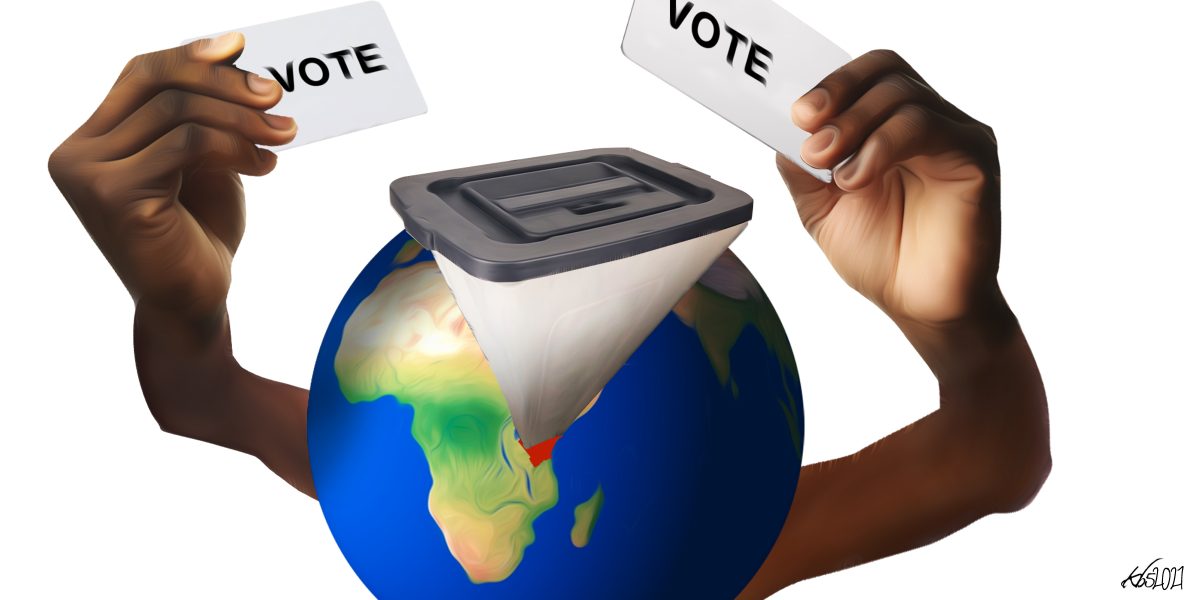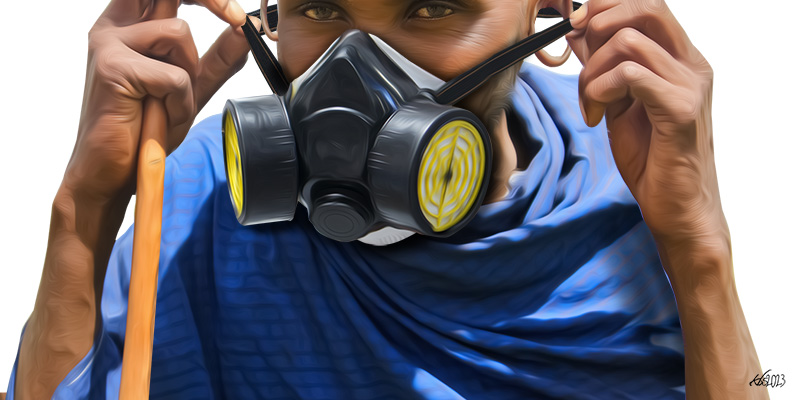The Currency of Clinging and Belonging
The tales that Kenyans tell of landing abroad are often woeful in the beginning. The humour comes years later, after one has overcome adversity and can sit down with fellow diaspora Kenyans over mbuzi choma at Swahili Village in Washington DC and reminisce about that first day.
We once traded stories about how much money each of us had on arrival at the airport. The guy who said he had exactly eleven Kenya shillings in his pocket provoked uproarious knee-slapping laughter from all of us. I had US$200, I confessed. My college tuition fees which were due the week of my arrival amounted to US$4,000. It was also pouring freezing rain on the day I landed at JFK airport in New York. All this was a familiar story to many of us who eventually found a second belonging in a foreign land. Fast-forward to the year 2020, and these Kenyans who arrived with nothing are now sending home US$3 billion a year.
If ever there is a moment when Kenyans cling tightest to their Kenyan belonging, it is on the day of their arrival abroad, when everything seems too foreign, too cold, too unfriendly, too distant, too bricked-in, when everything feels intensely out of place.
This clinging to Kenyanness is an emotional reservoir that is transformed into hard currency. Any government would be wise to cultivate it, to encourage its diaspora’s connection to their home country no matter how far away they settle. But Kenya’s history proves that those who have come into political power have had no such wisdom. They have blamed the diaspora’s characteristic clinging to their ethnocultural enclaves for their own failure to enable their population in the diaspora to fully enjoy their rights as Kenyan citizens.
The Kenyan abroad is an ethnolocalized citizen. They localize their global belonging through ethnic cocooning that offers social insurance against loneliness and material need especially when faced with adversity. This ethnic enclaving becomes a primitive form of tribal territorialism that works by keeping other Kenyan ethnic groups out. It assumes a group’s resources are too meagre to be shared with outsiders.
This is a primal stage of diaspora belonging and clinging that all dispersed communities go through. It is not unique to Kenyans, but as late entrants into the field of national diasporic populations, Kenyans abroad have the advantage of growing away from its narrowness because they already have the examples of other diasporas to follow. The fact remains that this primal stage of tribalisation in global spaces, which is an expected part of the journey of a dispersed people, is no reason to lock them out of their civic engagement as citizens of their home country.
In the balancing of their ethnolocalized realities, the easiest way to maintain the connection with Kenya has been through remittances; families in Kenya are sustained and the social-economic fabric is patched up sufficiently to keep life moving through the ravages of political fraying. Does this count for political engagement? Not if the sender does not have a say in what goes on in Kenya. Over time, and with the rising number of Kenyans abroad, it has become a long-drawn out battle for diaspora Kenyans to be allowed to fully engage in Kenya’s politics.
Diaspora battles against lockout
When President Kibaki came to Washington DC as a guest of President George W. Bush in 2005, we as officials of the Kenyan Community Abroad grabbed the opportunity to present our case for dual citizenship as the debates for constitutional review and change were happening in Kenya. After the president of the Kenyan Community Abroad (KCA) spoke to the packed ballroom on the issue, President Kibaki responded in his speech, “You can’t have one foot here and another one there!” He was wrong.
The naysayers said that if the president has spoken, then that’s that. Luckily, with the death of the de jure single party system, the days when a president’s word was law were gone. But much as our struggle bore fruit that proved the president wrong, the diaspora community remains politically ineffective as our right to vote remains suppressed, as those who dare to challenge authority can still get kicked out of their own home country, and as our opinions about Kenya are still rubbished. A brief reminder of this struggle will establish that Kenya’s diaspora has never shied away from confronting marginalisation.
In 2000, Kenyans abroad started challenging the idea that taking the citizenship of your country of residence made you unKenyan. The Kenyan Community Abroad, the organization that spearheaded that battle, mobilised over 10,000 diaspora Kenyans who appended their signatures to a petition that carried the fight to the Bomas Draft process where KCA had successfully lobbied to have two delegates. Dual citizenship was finally entrenched in the 2010 Constitution. It was a win that all diaspora Kenyans felt entitled to claim credit for, even those who had opposed it.
The roots of political neutering
A decade after their Kenyan citizenship and voting rights were constitutionally entrenched, dual citizens are still fighting to be recognised as eligible for political office, representation and voting. What they send home should not matter. But what diaspora Kenyans ought to never lose sight of is that every time they fight for their right to civic engagement, they are entering a battlefield strewn with the skeletons of politically powerless Kenyan communities whose members have died fighting or waiting for their inclusion.
The troubling history of disconnect and discontent followed diaspora Kenyans wherever they settled, like a witchcraft token that was secretly placed in their suitcases. They joined the political struggles of the Nubi Kenyans, the Makonde Kenyans, the Somali Kenyans, the northern Kenya communities and the Pwani people who have fought long and hard against the imposed political impotence where are denied the vote or are perceived as outsiders.
In 2000, Kenyans abroad started challenging the idea that taking the citizenship of your country of residence made you unKenyan.
The neutering of marginalised populations is done to prevent them from tipping the political scales unfavourably. Whether this is a real or imagined possibility is inconsequential. As long as you recognise someone as eligible to vote, you acknowledge their power to put you in or out of office. Marginalisation also comes about through the neglect and laziness of leaders who have no vision, not an iota of patriotism, and no understanding of what it takes to build a nation.
Necropolitics and the weaponisation of citizenship
Citizenship, which refers to the legally recognised state of belonging to a given territory, is where political power lies. With it, every citizen gains the ability to engage politically and become a co-architect of their country’s reality. But Kenyans have a country that has cultivated a culture of manipulating, disavowing and devouring its citizens’ state of belonging. There is something fundamentally broken about a country that weaponises citizenship against its own populations.
In a perfect set-up of necropolitics, where those in power choose how some may live and how others must die, Kenya has created a culture of choosing who belongs and who does not, and in so doing, it has crippled the ability of many Kenyans to contribute to national growth. Citizens are a country’s most valuable resource. It should always be in the interest of any government to engage and include all those who are born within its borders and who proudly call that country home.
There is something fundamentally broken about a country that weaponises citizenship against its own populations.
Necropolitics also refers to the subjection of a people to a political death so that their existence is like a carcass that a vulture state feeds upon. In this group also lies Kenya’s hoi polloi whose votes are always manipulated at every general election. They are locked out of justice, entombed in apathy, and silenced or denied belonging when they rise up in protest. Their lives are valueless to those in power, which is why ethnic cleansing, extrajudicial killings, elimination of witnesses and shooting peaceful protesters is a part of Kenya’s long history of political deathing. This history lays the foundation that now informs the political marginalisation of diaspora Kenyans.
The ghost of duality that came before diaspora
The history of the marginalisation of Kenya’s Muslim community goes way back to the incorporation of the coastal strip, also known as Pwani, into the Kenyan territory at independence. Until then, Pwani had for long been under the Sultan of Zanzibar. Post-independent economic repression, theft of community lands and poor investment in education for Pwani people led to calls for secession under the cry Pwani si Kenya (the Coast is not Kenya). In the nineties, the Mombasa Republican Council (MRC) gave voice to this frustration and this led to waves of victimisation of Mombasa Muslims who were conveniently accused of terrorism.
Kenya’s coastal leaders were scrutinised and victimised because of their connections to other countries. It is not uncommon for Mombasa Kenyans to have family in Yemen and Oman, countries with which we share Swahili language and culture. After all, it wasn’t until 1869 that the Suez Canal artificially split the Horn of Africa from the Arab Peninsula and made it a separate landmass. Before KCA’s fight against discrimination of dual citizens, there was the Islamic Party of Kenya’s (IPK) fight against Moi’s repressive regime in Mombasa.
Kenyan-born IPK leader Sheikh Khalid Balala was accused of secretly being a citizen of Yemen by birth. The government stripped Balala of his Kenyan citizenship after he travelled to Germany, a move that was meant to stop him from re-entering Kenya and continuing his fiery attack against the oppression of Kenya Muslims by the Moi government. Kenyans abroad understand this nefarious tactic of being labelled foreigners as a way of blocking them from becoming an active force for change in Kenya’s politics. While Balala’s Kenyan citizenship was reinstated through the dramatic protest and lobbying by an opposition that established he was indeed a Kenyan by birth, it wasn’t until nearly two decades later that Kenyans abroad would legally secure their right to dual citizenship and, in essence, their right to engage politically without facing discrimination.
The well-known case of Dr Miguna Miguna, who was denied entry into his own country, remains fresh. The self-styled “General” and leader of the National Resistance Movement (NRM) who had famously sworn in a rigged-out candidate as the People’s President, created drama at airports reminiscent of Sheikh Balala. Both had the dual belonging dagger drawn against them. Thousands of Kenyans abroad saw the injustice of it and felt the terror that they too could be locked out of their own country on flimsy grounds.
Kenyans who challenge political injustices in Kenya will quickly get their citizenship weaponised against them. Those who hold dual citizenship and who are viewed as troublemakers by the establishment have had their passports disappear when presented for renewal. I am a victim of this injustice and to date, my Kenyan citizenship remains in limbo, all the paperwork having been disappeared and all traces of my application for the renewal of my Kenyan passport completely erased.
When diaspora individuals have chosen to battle it out with the big boys in the political rough-and-tumble, they have faced fierce pushback that often includes seeking court intervention. In 2013, Bishop Donald Kisaka Mwawasi took the Independent Electoral and Boundaries Commission (IEBC — an oxymoron if ever there was one, for there is nothing independent about the IEBC) to court. Mwawasi was appealing the High Court’s decision that a person who holds dual citizenship cannot run for elective office as a Member of Parliament. Court records show that the appellant was in fact born and raised in Kenya. Mwawasi won the battle and helped move the diaspora closer to victory against political exclusion.
Thousands of Kenyans abroad saw the injustice of it and the terror that they too could be locked out of their own country on flimsy grounds.
In 2019, the nomination of Mwende Mwinzi as Kenya’s Ambassador to South Korea once again brought to the fore the country’s primal fear of imagined foreignness. The spurious charge that an envoy with dual-citizenship would have split loyalties caught the imagination of Kenyans; fantasised betrayals against the country were evoked and the sensationalism remains in the minds of Kenyans furiously fighting the discomfort brought on by new ideas about who is eligible to influence the country’s destiny.
Ideas about the ineligibility of dual citizens are pushed by members of parliament whose motives are, in the quintessential form of necropolitics, to decide how one dies and how another lives, in this case, how to kill off a perceived political threat and how to strategically put in place the preferred person who gets to live in that political space. This is the ideology of mtu wetu politics, and diaspora Kenyans are not mtu wetu material unless they are willing to bow to the keepers of political power.
The secret to diaspora’s political power
Kenya also has communities that, until very recently, had lived in Kenya for decades, some for over a century, in a vacuum of statelessness where dreams died at birth. They lived through political, economic and social marginalisation that drove them into generational poverty. These are Africans, ethnic groups born in colonised spaces other than what became Kenya. In the 19th century, the Nubi who had served as military slaves to the British Crown were relocated from a non-existent South Sudan to non-existent Kenya. Decades after becoming a sovereign nation, Kenya saw the Nubi as foreigners and denied them the right to citizenship.
The same fate of statelessness befell the Makonde who had migrated to Kenya from Mozambique long before independence. It took them eighty years before Kenya granted them citizenship rights. Within that time, generations of Kenyan Makonde were subjected to politically orchestrated poverty since they could not obtain the legal paperwork that would allow them to go to school, get employment, start businesses, run for leadership or vote. Other communities such as the Kenyan Somali in the north have long been seen as misfits and have suffered for it. Being labelled shifta (ragtag terrorists) became the common way of viewing this neglected community.
While all these communities have undergone intense suffering within their own country of birth and residence from which they could not flee, the stigma of the systemic rejection of the Kenyan diaspora on the same basis of perceived foreignness is lessened by that population’s economic power. Diaspora Kenyans must always tie their struggle for inclusion to the struggle of those Kenyan communities who are not as fortunate to have the resources to raise their voice. Diaspora Kenyans will only start being truly effective in Kenyan politics when they strategically begin to tie their battles to those of Kenyans at home, no matter the difference in distance and economic standing.
The diaspora’s political power and impact lies in moving away from purist diaspora issues such as voting rights, investment opportunities and rights to political representation and public office, to a strategy that involves connecting with the most marginalised Kenyans on the ground. This connecting will in turn provide diaspora Kenyans with the impetus they need to speak on specific diaspora issues. It is not enough that the Nubi and Makonde Kenyans were granted citizenship; it takes a long time to implement those rights. Kenya is a country now in the throes of class warfare where once again the political class that is stoking the fires of civil strife will come out unscathed at the end of it all. There is, therefore, an entire tribe of marginalised Kenyans that diaspora Kenyans have an opportunity to connect with and to help fight against the insidious culture of political deathing where their lives become valueless, and their deaths are only a statistic.
The myth about Kenyans as political movers and shakers in Washington DC
The Kenyan diaspora is still too young to effectively engage in influencing foreign policy on behalf of Kenya. It is important to understand that significant impact on US foreign policy is made by ethnic communities living in the US as American citizens. Ethnic in this case refers to national identities such as Jewish, Indian, Filipino, Hispanic, Armenian, and Arab, among others.
The African immigrant community has yet to develop a formidable continental identity with the organising power of these other groups. Only then perhaps can an African lobby group as powerful as the American Israel Public Affairs Committee (AIPAC) successfully lobby the US to implement policy that is beneficial to African countries. Individually, African countries will remain too weak to influence foreign policy on their own behalf.
African diasporas are even weaker and only now beginning to find ground as the latest immigrant group in the US. With 54 countries, each with its own ethnic communities, it has been near impossible to amalgamate the 54 African nations into a single interest group that can lobby for any of the 54 countries’ national interests. These attempts have been made, and there are still continental organisations attempting to speak for African countries. But for now, they remain a feeble light in the firmament of international affairs.
Diaspora Kenyans must always tie their struggle for inclusion to the struggle of those Kenyan communities who are not as fortunate to have the resources to raise their voice.
There is another way. An African country can individually lobby to influence US foreign policy through its embassy in what is referred to as Track One Diplomacy. However, African embassies always end up hiring lobbyists in Washington DC at a fee that could provide Kenyan students with free high school education for some years. Like many African countries, Kenya has taken this route when lobbying for favourable US policies. The challenge with the governments of African countries lobbying the US government is that they will not address the issues that oppress the people as that would amount to the political class lobbying against itself.
It has therefore always been the burden of citizens to fight for foreign policy that erases oppressive measures, against the interests of the political class and in the interest of the citizens.
Power protects power, and the history of US policy in Kenya has largely remained detrimental to the Kenyan masses that have suffered the effects of bad contracts, mismanaged loans and Structural Adjustment Programmes that come with punishing austerity measures. This is about to hit Kenya again as a result of the government taking a US$2.4 billion IMF loan. Inflation will rise as before, and it is the ordinary Kenyan who will no longer be able to afford a packet of unga. We know this game, we’ve been here before, and the diaspora as singular actors remains powerless in reversing or renegotiating this deal.
In the US, the Kenyan diaspora community will have the power to influence foreign policy when it is able to achieve three things: promise substantial votes in congressional districts where the member of congress can speak on their behalf; amass enough financial power to contribute to and impact political campaigns; and master the art of organising and lobbying around their issues. African diasporas have not reached this stage yet.
Power protects power, and the history of US policy in Kenya has largely remained detrimental to the Kenyan masses.
Legislation has been won and bad foreign policy has been reversed on behalf of African countries through the power and influence of the African American community. Organised Black power by the descendants of enslaved Africans has been the wind beneath the wings of African continental and nationalistic struggles since the late nineteenth century. The Kenyan diaspora would do well to be aware of this historical fact and discard the stereotypes it holds against Black America.
This calls for building Track Two Diplomacy that involves non-state actors. It means seeking the attention and partnership of groups such as the Congressional Black Caucus and its Africa Braintrust, the Progressive Caucus, HBCUs (Historically Black Colleges and Universities) and influential Black internationalists. This cannot be done without an organised diaspora. We have organised and succeeded before when we fought for dual citizenship. We can do it again and build stronger connections with non-Kenyans. That would be political maturity and the source of the Kenya diaspora’s new political power.








